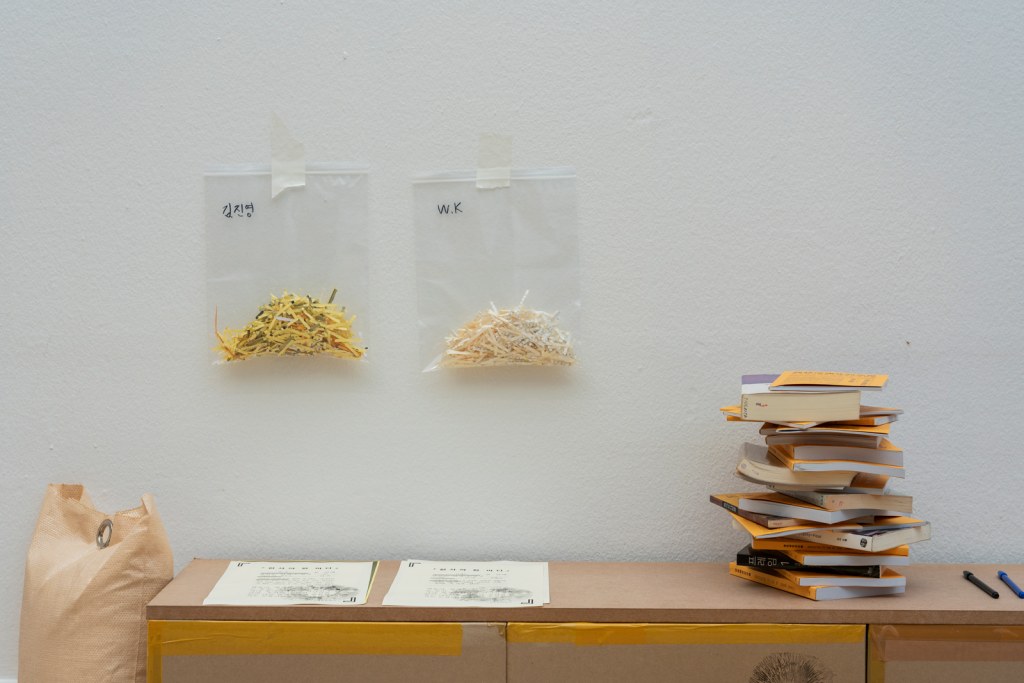
인간 정신 되살리기 Remaking the Human Spirit
DD/K/R-i (디스플레이 디스트리뷰트 Display Distribute, 쿤치 연구 포럼 공동체 KUNCI Study Forum & Collective and 리드-인 Read-in): Amidst the alienation and the breaking down of sociality in common life—in acknowledgement of the fact that “the world will not be saved”—how do you see the remaking of the human spirit?
AL-T (안나 로웬하웁트-칭 Anna Lowenhaupt Tsing): The art of noticing is, I think, a way to remake the human spirit. When I wrote Mushroom at the End of the World: On the Possibility of Life in Capitalist Ruins, many people came and wanted me to endorse hope as an almost Christian universal principle, and I did not feel comfortable with that. Even though the book is trying to argue some ways that people can navigate the ruins, I don’t think it’s a matter of holding onto hope like it was some abstract principle. One of the things that I was really inspired by working with the Satoyama revitalisation movement in Japan was their sense that to be human you needed to be working with non-humans and that it caused an intense form of alienation when people stopped doing that. That was very inspiring for me. There is a sense where we need non-humans in our lives—they’re going to be there whether we like it or not—and that we need to acknowledge them.
AL-T: 일본의 사토야마 도시재생 운동을 함께 하면서 큰 영감을 받은 한 부분은 인간이 되기 위해서는 비-인간 주체들과 함께 해야 한다는 그들의 의식이었고 사람들이 그러한 비-인간 주체들과 함께하기를 멈추면 소외감이 심해졌다는 점입니다. 그게 큰 영감을 안겨줬죠. 우리는 삶에서 비-인간 주체들이 필요하다는 인식은 있습니다만 – 우리가 좋아하든 싫어하든 그들은 거기 있을 것이고 – 우리는 그들을 인정해야 할 필요가 있겠죠.
I started working on pathogenic fungi to argue that in fact not all fungi have beneficial affects. In fact fungi and humans are the two organisms that have caused the most extinction, and generally by working together in some way or another. For example, the fungus that’s causing the most extinctions right now is this Bd chytrid fungus that’s killing frogs around the world. But the reason that it’s killing frogs so quickly is that they put all of these diseased frogs on airplanes and send them around the world—they’re used for community-building projects, for eating, etc.—and then they escape and go off and kill all the local frogs. The fungus itself doesn’t go anywhere, you have to move it with the frogs.
사실, 균류와 인간은 대부분의 멸종을 야기한 두 유기체고 어떤 면에서 보면 대체로 함께 작용합니다.
……균류 그 자체로는 아무 데도 가지 않아요, 그로 병든 개구리가 함께 움직여야만 하죠.
송이버섯 글 작업은 이후 균 혹은 균류의 관련성에 대해 상당히 명백한 이해를 가져다주었는데요, 이 버섯에 관해 연구하면서 제가 너무 낙관적인 관점을 제공하고 있지는 않았는지, 제가 연구 중인 민족지학적 자료에만 관련된 건 아닌지 걱정하게 되었어요. 병원성 진균, 그러니까 다른 것을, 특히 식물을 죽이지만 동물과 사람들도 죽이는 균류에 관해 생각하기 시작했습니다.
My point is, in terms of the remaking of the human spirit, I feel an obligation to tell some terrible and terrifying stories, as well as some hopeful stories—to ask if there’s a way that we can tell terrible stories in ways that are careful enough that they will make people want to notice, to linger, to stay with these problems rather than to turn away. After working on matsutake mushrooms and offering some really positive understandings of fungus or fungal connections, I started to worry that the view I was giving was too bright and that it was just related to the ethnographic materials that I was working on. I started to think about pathogenic fungi—that is, the fungi that kills things—plants in particular, but also animals, and us. The argument against telling bad stories is that people will turn away, so my challenge as an artist and intellectual would be how can you tell these stories so well that people will continue paying attention?
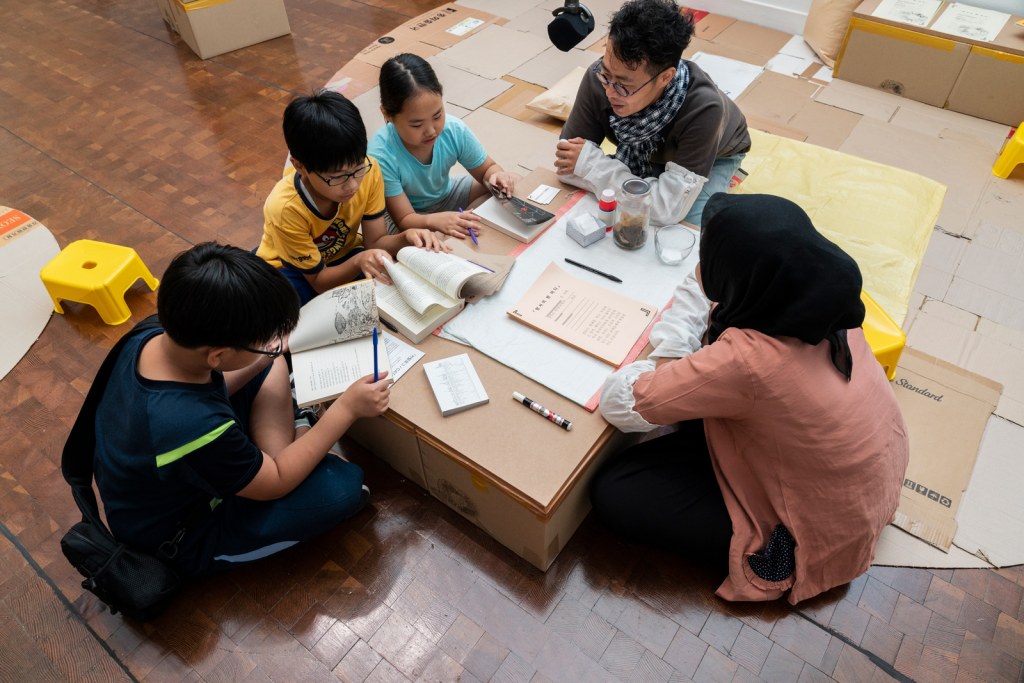
잠재적 공유지 The Latent Commons
DD/K/R-i: Does the concept of a latent commons require a form self-awareness among those in such relation, and can the thought of working more actively towards the commons negate the scale of the latent or even fugitive ‘undercommons’ (as per Harney and Moten’s suggestion)? How much latency (or opacity) is required in order to maintain non-destructiveness and avoid exploitation? Is there something to sustain with the hidden or dormant? If one characteristic of the latent commons is that it is undeveloped, what does it mean to make it visible?
DD/K/R-i: 잠재적 공유지(latent commons)라는 개념은 그런 관계 안에서 일종의 자기 인식을 요구하나요? 공유지를 향해서 더 적극적으로 작업한다는 생각이 잠재적이거나 탈주적이던지, 혹은 [프레드 모텐과 스테파노 하니가 말한] 언더커먼즈(undercommons)의 규모를 부정할 수 있을까요? 비파괴성을 유지하고 착취를 피하려고 얼마만큼의 잠복기(혹은 투명도)가 필요할까요? 숨겨진 것 혹은 휴면 중인 것과 더불어 유지할 수 있는 것이 있을까요? 잠재한 공유지가 전개되지 않았다는 게 한 가지 특징이라면, 그것을 드러나게 하는 건 어떤 의미가 있죠?
AL-T: I wish that the latent commons were more substantial. It’s almost embarrassing that the only commons that I can think of is a kind of commons that is yet to come and offers opportunities for collaborations, for opportunities that we might pick up on. It’s the best I can come up with, and I think it’s right for our times, but it’s not wildly enthusiastic. I just read recently that with most of the most deadly diseases that we know, it’s not the actual organisms necessarily that make people sick, but rather the disease environments, that is, the transformed landscapes made by human infrastructures. That’s back to the kind of pact between the infrastructure and the entity, that to make those diseases as deadly as they are you have to do something, and they’re involved in the kinds of human infrastructures that we’re making available for them.
AL-T: 잠재적 공유지가 더 견고했으면 하는 바람입니다. 제가 생각해낼 수 있는 잠재적 공유지라곤 아직 도래하지 않은 것과 우리가 포착할지도 모르는 협업의 기회를 주는 것이라는 점이 거의 당황스러울 지경입니다. 이것이 제가 생각할 수 있는 최선이고 오늘날에 적합한 것이라고 봅니다. 최근에 읽은 글에 따르면 우리가 아는 가장 치명적인 질병들도 실제 유기체가 사람들을 아프게 하는 것이 아니라, 특정한 조건으로만 그렇게 한다는 겁니다. 인프라스트럭쳐와 개체 사이에 일종의 협정이 맺어져 있고, 치명적인 질병인 만큼 발병에 이르기까지 어떤 일이 벌어져야 하며 이것은 인간이 그들에게 제공하는 일종의 인프라스트럭쳐와 관련이 있다는 거죠.
Whereas in the 20th century we isolated the good germs from the bad germs, there were certain types of bacteria, for example, where we just thought we didn’t want to put up with them, and we just wiped them all out, wiping out those things and our willingness to use the most dangerous ways to wipe out your enemies human and non human allowed you to imagine that you might be safe despite all that activity. It turned out not to be true. It turned out that there’s no place to hide from all of those infrastructural activities. I know that’s a little discouraging as a thing to say, but at least its the starting place for what we have to work with.
제가 말하고 싶은 건 20세기에 우리는 착한 편을 나쁜 편에서 따로 떼어 놓았다는 겁니다. 특정한 종류의 박테리아가 있었고, 예컨대 그런 박테리아를 다루기 싫으면, 싹 쓸어 없애버렸습니다. 그런 것들을 없애버리고 기꺼이 가장 위험한 방법을 써서 인간이든 비-인간이든 쓸어 없애려는 것은 그런 온갖 활동에도 불구하고 안전할지 모른다는 상상을 할 수 있게 해주었습니다. 그렇지 않은 것으로 드러났지만요. 그런 모든 인프라스트럭쳐 차원에서의 활동에서 숨을 곳은 없다는 것이 드러났죠. 그래요, 좀 실망스러울 수 있지만, 적어도 이런 점이 우리가 앞으로 할 일의 출발점입니다.
DD/K/R-i: But this idea of a ‘latent commons’, does it imply that it should progress to a coming, or self-realisation, or scaling of some sort?
DD/K/R-i: 하지만 ‘잠재적 공유지’라는 개념은 일종의 도래나 자기 실현, 규모의 변화 같은 것으로 진전해야 한다는 걸 암시하는 건가요?
AL-T: One thing is that I think that all of us are surrounded, even in the most barren places, with pieces of the latent commons, human and non-human, and that in terms of the human ones it seems to me that we have to stop imagining, as many Americans do, that your only allies are in your family and that everyone else can just die and you don’t care. So our understanding of our potential allies as just humans really has to get a lot broader. In terms of non-humans, it’s the same. Actually all around us are holocene fragments, places where the long evolutionary history of how animals and plants and fungi, all manners of bacteria, all manage to live together in some way or another. Even in our intestines. You could start right there. We are in these spaces of collaboration, we just have to figure out how to hold onto them, build them, nurture them, and pay attention to them, and to not let them be destroyed by some of the powerful infrastructural projects that are around us.
AL-T: 한가지 제 생각에는, 가장 척박한 환경에서조차 우리는 잠재적 공유지가 있는 곳에서는 인간과 비-인간들에게 둘러싸여 있다는 것입니다. 많은 미국인이 그러하듯이 자신의 동맹은 가족에만 있고 다른 사람들은 죽더라도 상관하지 않을 거라는 식으로 상상하길 우리는 그만둬야 합니다. 비-인간의 측면에서도 이것은 동일합니다. 사실 우리 주변을 둘러싼 모든 것, 홀로세 (Holocene) 의 단편들은 동물과 식물과 균류, 온갖 박테리아, 모두가 어떻게 어떤 식으로든 함께 살아가는지를 볼 수 있는 기나긴 진화 역사의 장이며, 우리의 내장 속에도 이런 부분이 존재합니다. 거기서부터 시작할 수 있겠죠. 우리의 모든 동지와 함께요. 이런 협업의 공간 안에 우리가 있고, 그저 이것을 어떻게 지속할지, 어떻게 구축하고 함양하고 주목할지, 그리고 우리를 둘러싼 다른 강력한 인프라스트럭쳐 프로젝트에 의해 파괴되지 않을지 알아내기만 하면 됩니다.
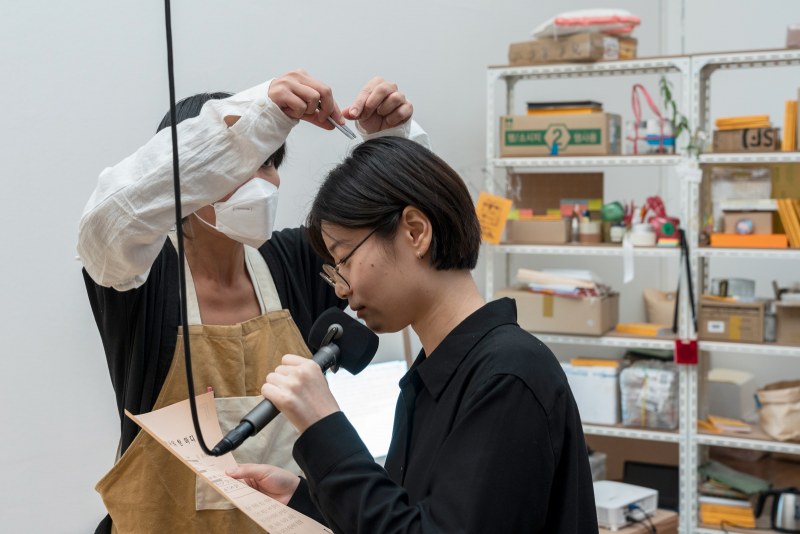
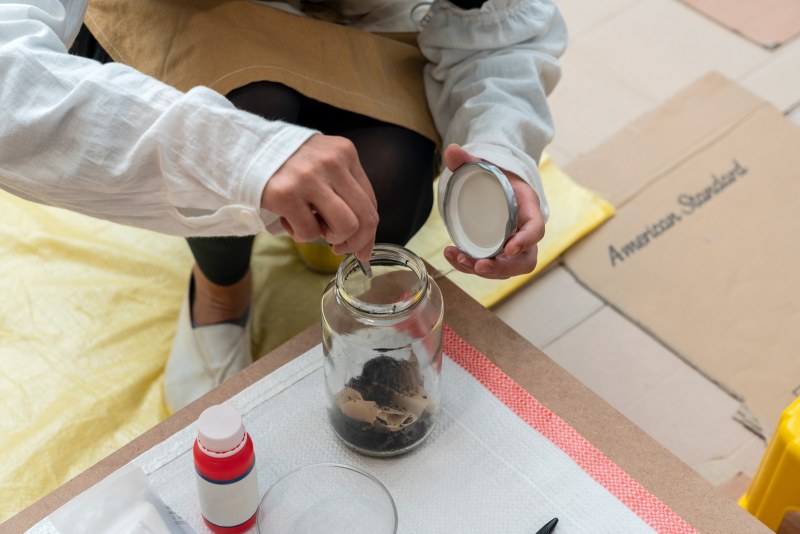
균근 매트릭스에서 예술가의 역할 Artists’ Role in the Mycorrhizal Matrix
DD/K/R-i: Speaking from our positions as artists, we couldn’t help but think of instances where artists enter into a community, especially often underdeveloped or undervalued areas, and engage in a series of activities that serve to revitalise a neighbourhood or a certain area, which then becomes gentrified. Private capital enters and re-appropriates these gestures for different purposes. The problem with this of course is that the artist, perhaps due to a lack of noticing, gets implicated in this kind of dialogue. Is it possible for artists to create narratives as a kind of re-evaluation of other, more standardised forms of value, especially economic value? This question follows the same sort of conundrum that arises with the matsutake mushroom, whereby at the end of the line a foraged fungus becomes a very specific kind of commodity. Artists in these situations are producing really wonderful things, before getting absorbed into expensive real estate value. The question is maybe then something like: how do we maintain the nuance of the narrative when people have this tendency to essentialise and bring optimism (which is of course also very human and necessary), how do we resuscitate this kind of attention to detail? Do you see a role for artists in this matrix of noticing, middlemen, translation, commodification and regeneration? What could some of our aims as artists/anthropologists/thinkers be; what types of spores should we seek to spawn?
DD/K/R-i: 예술가의 입장에서 말해 보면, 지역 공동체로 들어가는 예술가의 보기를 들지 않을 수가 없네요. 특히 저개발, 저평가된 곳 어떤 동네나 구역을 활성화하는 일련 활동을 한 뒤, 그곳은 둥지 내몰림(gentrified)을 겪게 됩니다. 사유 자본이 들어와 다른 목적으로 그곳을 재-전유하죠. 이 문제는 어쩌면 예술가가 알아차리지 못해서 이런 논의에 연루되는 거죠. 좀 더 예술가가 다른 표준화된 가치의 형태, 특히 경제 가치를 재-평가하는 것과 같은 내러티브를 만들 수 있을까요?
AL-T: Let me try and answer that question through a question of the non-human perspective and what can be brought about by introducing the mode of mycorrhiza into our thinking. Would it be possible for us to imagine this non-human or even a “post-anthropocene” perspective in our contemporary institutionalised lives in the urban sphere? One needs to acquire patience in order to mix with the multi-species other, but how can we learn to even notice them in the city?
AL-T: 비-인간이나 심지어 “포스트-인류세(post-anthropocene)”관점을 현시대에 제도화된 우리의 도시 삶의 영역으로 가져오는 것을 상상할 수 있을까요? 다양한 종(multi-species)의 타자와 섞이기 위해선 참을성이 필요하다고 했습니다만, 도시 안에서 우리가 바로 그것을 알아차리는 방법이라도 배울 수 있을까요?
When we think only with humans and other animals, we think of individuals, but when you think with mychorrizal fungi, those fungi that only live through their interaction with plants, you have to think across individuals. Organisms are so deeply intertwined and interconnected with one another that it’s the set of relationships and encounters that are always making landscapes and communities as they will together. So that’s why its good to think with the relations that make something emerge.
인간과 다른 동물만 생각하면 각 개별체로서 생각하지만, 균근 균류에 관해 생각하면 – 뿌리곰팡이류는 식물과의 상호작용을 통해서만 살아가니까 – 개체를 가로질러서 생각해야만 합니다. 그런 유기체들은 서로 너무나 깊숙이 엮이고 연결되어 있어서 풍경과 공동체를 함께 만들어내는 것은 항상 관계와 만남의 조합입니다. 그렇기 때문에 무언가를 드러내는 관계에 대해서 언제나 고려하는 게 좋겠죠.
I think it can relate in the urban setting as well. If you only think about the buildings and the real estate, and then imagine the people as just residents of given apartments that have nothing to do with each other, once they buy the apartment they are the owner and that’s the end of it, rather than thinking of the relations that are involved. I heard a talk about an apartment complex where they had tried to put in some green space and it had allowed kids to play outside, and they put in a couple of trees, and the author of the talk was arguing that that outdoor space really made a difference in terms of building a community. That space has been really denigrated because mostly immigrants live in it, and it’s considered a poor space that they want to knock down. The author was arguing that instead you need to look at the kinds of communities that have built up there, rather than the real estate value.
이것을 도시 상황과 관련 지을 수도 있습니다. 건물과 부동산에 관해서만 생각하면 아파트 주민들은 서로 아무 관계가 없다고 떠올립니다. 그들이 처한 관계를 생각하는 대신, 아파트를 사면 주인이고 거기서 끝이라고 보죠. 몇 주 전에 녹지 공간을 조성하고 어린이들이 밖에 나무 몇 그루에서 놀 수 있게 시도한 아파트 단지에 관한 토크를 들었는데요, 야외 공간이 공동체 형성에 있어 큰 차이점을 보여주었다고 했습니다. 그 공간은 대체로 이민자들이 사는 곳이라서 상태가 좋지 않았고 빈곤한 곳으로 여겨져서 철거가 필요했는데 부동산 가치를 보는 대신 주민들이 구축한 공동체의 어린이들을 봐야 한다는 이야기가 오갔습니다.
One of the things that artists do is refuse some of the universalisations that policy makers want to push us into, to show us what matters in a particular place-based understanding of what’s going on. In my new project Feral Atlas, aboriginal elders’ painting can do that, so too can the song “Genjer Genjer”.
예술가들이 하는 일 중 한 가지는 정책 입안자들이 밀어붙이려 하는 이런 보편화를 거부하고, 무슨 일이 벌어지는지를 개별적 장소에 기반한 이해를 통해서 무엇이 중요한지를 보여주는 겁니다. 토착민 부족장의 페인팅[땅의 우주관이 담겨 환경 문제를 다룬 일]과 같이 “젠저 젠저 (Genjer Genjer)” [정치적 선동 이유로 금지곡이었던 인도네시아 민요] 라는 노래도 같은 일을 정말 할 수 있는 것이죠.
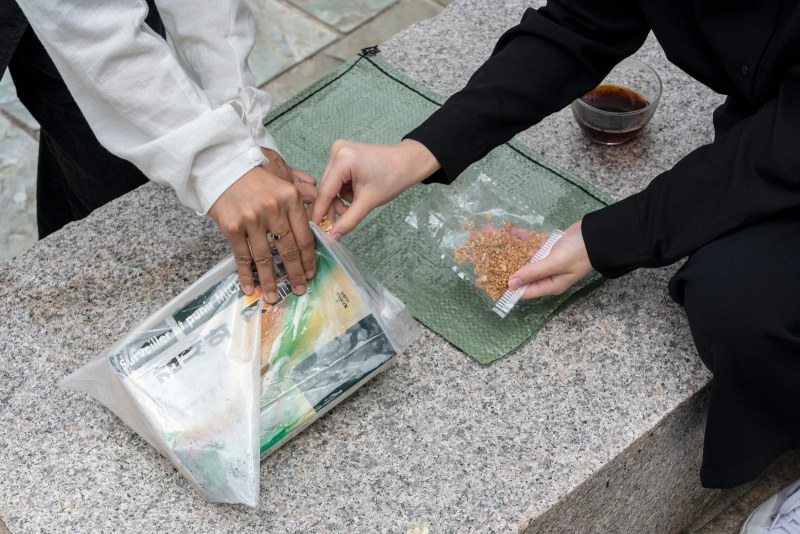

오역에 관련하여 On Mistranslation
DD/K/R-i: One of the questions that we want to return to relates to the notion of translation and thinking of translation as the conversion of feral resources into standardised units of commerce. In your work you seem less interested in halting or throwing a wrench in the flow of goods than with allowing things to proceed but with this more careful consideration of what is developing along the way. This led us to wonder, then, what the potential of mistranslation in this sense might be?
AL-T: I’m very interested in two literatures on translation. One is the post-colonial literature that Barthes used with the idea that mistranslation goes along with imperial rule. There is a wonderful book written by Lydia Liu, a literature scholar, called Translingual Practices, in which she argues that in the imperial relations between Britain and China translation played a really important role in domination. The reason China became dominated by the West in part had to do with practices of translation. So that power and translation for her are always tied, and she goes through several Chinese words that you don’t know if intentionally or unintentionally are translated so strangely into English that they caused huge political events. Perhaps the most famous one that’s not in that book but in one that I edited called Words in Motion is about a word that in English is translated as “barbarian”, which so offended the British that it led to violence that might not have happened otherwise.
AL-T: 번역과 관련해서 흥미로운 두 문헌이 있어요. 첫 번째는 오역은 식민지 지배와 함께 간다고 본 롤랑 바르트의 생각을 따른 탈식민주의 문학인데요. 문학 학자인 리디아 리우가 쓴 아름다운 책, 『언어횡단적 실천 (Translingual Practices)』입니다. 영국과 중국의 식민 관계에서 번역이 지배에 있어 아주 중요한 역할을 했고, 중국이 서구에 지배당한 이유 가운데 번역 적용도 어느 정도 역할이 있다고 이야기합니다. 그녀가 보기에 권력과 번역은 항상 한데 묶여있는데요, 의도적으로 혹은 본의 아니게 영어로 너무 이상하게 번역되어서 큰 정치적 사건을 일으킨 중국어 단어들을 살펴봅니다. 이 책에서는 다루고 있지 않지만, 제가 편집을 맡은 『움직이게 하는 말 (Words in Motion)』에 등장하는 사례 가운데 가장 유명한 단어는 영어로 “야만인(barbarian)”이라고 번역된 중국어 단어일 것입니다. 이 말이 영국인들에게 너무 모욕적이라서, 그렇지 않았다면 벌어지지 않았을 폭력으로 이어졌죠.
The second literature on translation that’s really exciting is coming out of technology and science studies with folks like Bruno Latour who argue that you might want to see what happens when an engineer and an electric motor are working together—that’s a process that he wants to call translation. Some of that stuff that I was talking about, that relates infrastructures and entities, you could call that translation. I think these two literatures together work really well, and in fact I’ve been really influenced by Shiho Satsuka’s work. She has a book called Nature in Translation and I think that it’s really helpful for seeing these two things. Nature in translation for Satsuma is both a linguistic translation that’s tied up in postcolonial dynamics and the human non-human relationship and the way that those form networks together. Reading both makes me see that it’s really important to try and see the ways that both power and connection get formed. So yes, translation is an important way that we navigate the world.
번역과 관련해 정말 흥미로운 두 번째 문헌은 브루노 라투르 같은 이들이 쓴 기술 과학에 관한 연구에서 나옵니다. 라투르는 기술자와 전기 모터가 함께 일한다면 어떤 일이 벌어질지 살펴보는 게 좋을 거라 논하는데요, 그는 이런 과정을 ‘번역’이라고 부릅니다. 제가 논하는 일부 중에 인프라스트럭쳐와 개체에 관한 것이 번역이라 부를 수 있겠네요. 이런 두 가지 문헌을 함께 보면 정말 앞뒤가 잘 맞는데, 사실상 저는 사츠카 시호의 작업에 큰 영향을 받았죠. 『번역된 자연 (Nature in Translation)』이라는 책을 썼고, 저는 이 책이 위의 두 문헌을 보는데 정말 큰 도움이 된다고 생각합니다. 사츠카 시호에게 있어 『번역된 자연 (Nature in Translation)』은 탈식민주의적 역학과 인간과 비-인간의 관계가 일치되는 언어의 번역인 동시에 이러한 것들이 어떻게 함께 네트워크를 형성하는지에 관한 책입니다. 그렇기 때문에 이 두 가지를 읽어내는 것은 권력과 사회적인 관계가 어떻게 형성되는지를 살펴보는 것이 중요하다는 걸 이해하게 합니다. 네, 그래서 번역은 우리가 이 세계를 항해하는 중요한 방법입니다.
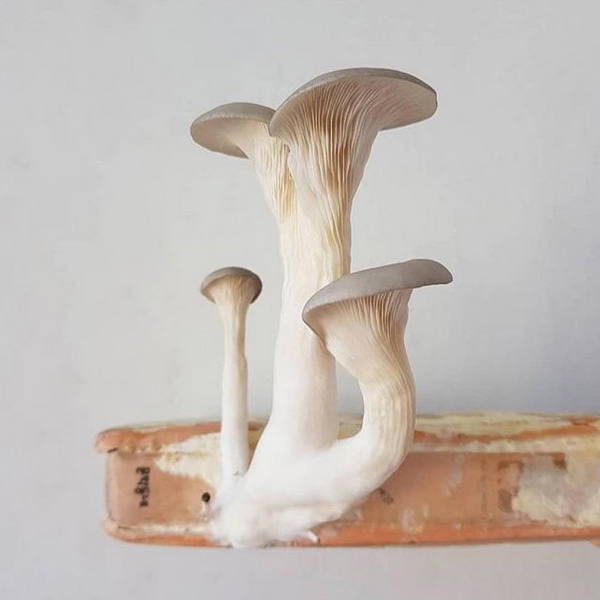
불확정성 Indeterminacy
AL-T: The indeterminacy narrative is in contrast to a progress narrative that in the 20th century told everyone that we were going somewhere and that the going was getting better and better. Once that starts to fall apart, which I think it has, then we are stuck in indeterminacy, for better or worse. Indeterminacy becomes inscribed on the condition we are in as both humans and non-humans, and we do need to make the most of what we can with it. We can’t expect any kind of guarantee. When I was a teenager, I joined progressive social movements for an end to racism and sexism, but I took for granted the kind of “progress” that’s part of the conception of “progressive.” Today, I haven’t changed my commitments, but I have changed the assumption that we are necessarily “moving forward.” In the United States, we are having to live with a shift toward fascism and the rise of new white supremacy movements. There is nothing of “moving forward” about this. As we organize social movements, we have to take advantage of the contingencies of our time, without taking a better future for granted. Indeterminacy is the situation that we are in. That’s not a reason to give up, but rather to take our coalitions really seriously.
AL-T: 불확정성 내러티브는 진보 내러티브와 대비되는데…… 저는 10대 시절에 인종주의와 성차별에 마침표를 찍고자 하는 진보적 사회 운동, 즉 우리가 어딘가를 향해 나아가 고 있다고 생각했던 이러한 것들에 열심히 동참했어요. 지금 우리가 21세기에 살고 있다는 약속의 일부는 바로 우리가 정세를 피상적으로 바라보는 것은 별로 좋지 않다는 의식이죠. 제가 사는 곳에서는 정세가 파시즘 쪽으로 흘러가고 있어서, 지금의 사회 운동들에 관해 아주 낙관적으로 보기는 어렵습니다. 많은 이들이 이런 상황에서 어떻게 작업해야 할지, 이 세계 안에서 일어나고 있는 아주 끔찍한 일들의 일부를 어떻게 멈춰야 할지 꽤 혼란스러워하는 중이죠. 그렇기 때문에 불확실함이 바로 우리가 처한 상황인 거죠.
As great as it is to be a mushroom picker, it’s not saving the world. Its about negotiating the ruins as best we can. It’s that condition that I think that theorists, artists, and social scientists need to be thinking of pretty hard—what can we do given this situation of not being able to save everything in a single stroke? I think that so much of our policy planning is based on this progress narrative even to this day, but I think even ordinary people are not as convinced as they once were. But if you look at what officials are working on, they’re still saying, “You know, things are going to get better and better”—they’re still hooked on that rhetoric, and the rest of us don’t know how to think about our situation as a result.
상상과 추측 Imagination and The Speculative
DD/K/R-i: And another literary device that we were thinking about was the role of the speculative in your work: What role does imagination or the speculative play, and how can it be deployed potentially as an effective counter-narrative? What are some of the tactics that you employ to weave narratives that resist the possibility of appropriation and reduction?
AL-T: I think that the job of anthropologists, like artists, is to help shape a public imagination. We have a responsibility to the world. The way that we tell stories and put them together makes a huge difference in terms of how people understand them. This is the work of imagination, and it’s always there, and it’s impossible to write a single sentence reporting something that doesn’t bring the imagination inside. One of the things that I like about the field of anthropology is that it asks us to bring what we call theory forward as a way of talking about things in the world and empirical data together. That’s where the imagination comes in. So the speculative is used not necessarily in terms of trying to predict what’s going to happen next, or making a false view of your research, but in trying to pull something that’s true from your research and make it important to people through the ways that you tell that story and express it. That’s the work of imagination.
AL-T: 추측보다는 상상하기로 시작해 볼까요. 인류학자들의 역할은 예술가들처럼 대중의 상상력이 구체적일 수 있게 도와주는 것입니다. 우리는 세상에 대한 책임이 있습니다. 이야기를 어떻게 전하고 구성하는가에 따라 사람들의 이해에 큰 차이를 끌어내기 때문이죠. 이것이 상상력의 작용이며, 언제나 거기 있기에 상상을 하여 알리는 문장을 하나라도 못 쓰는 건 불가능하죠. 인류학 분야에서 좋아하는 부분 중의 하나는 세계에 존재하는 것과 실증적 데이터를 하나로 합쳐 우리에게 이론이라 부르게 하는 것이죠. 여기에 상상력의 자리가 들어옵니다. 따라서 이다음에 무엇이 일어날지 예측하거나 연구에 대한 잘못된 관점을 두는 것이 아니라, 연구에서 참된 부분을 끌어내 이야기를 전하고 표현하는 방식을 통해 사람들에게 그것이 중요하게 받아들여지도록 만드는 것입니다. 그게 바로 상상력의 작용이죠.
One context in which I’ve thought about the speculative is when discussing with colleagues on the era of the anthropocene as a time of such great human disturbance such that the whole geology and ecology of the earth has gone into a new directions because of human infrastructures. A colleague of mine has usefully pointed out that the use of the anthropocene as a kind of science fiction concept asks of us to look back from the future to the geological epoch that we’re in and see how it’s characterised. In that sense, you can’t use the term anthropocene without drawing yourself into a kind of speculative mode of analysis. The reason that I use the term anthropocene is that it stimulates a kind of conversation with natural sciences and humanities people in a way that’s rare. There are a lot of criticisms of the word, but it’s trying to hold onto that conversation and thinking about speculation as in some ways, again, the work of the imagination and what kind of agency it gives us to take that in other directions. It seems really important that we’re not just collecting information about the anthropocene, but that we’re also telling the story in a particular way.
인류세 (anthropocene) 가 인간의 인프라스트럭쳐로 인해 지구 전체의 지리와 생태가 새로운 방향으로 가버린 교란의 시기라는 관점에서 동료들과 토론 하면서 생각했던 맥락이 있습니다. 동료 한 명이 유용하게 이런 점을 지적했지요. 인류세는 일종의 공상과학 개념인데, 왜냐하면 이 개념은 우리가 속한 지질학 시기를 인류세라는 개념에 따라 미래에서 보는 듯 보게 하기 때문입니다. 그런 점에서 일종의 예측적인 분석을 하는 모습을 그리지 않고서는 인류세라는 단어를 쓸 수 없는 겁니다. 제가 인류세라는 단어를 쓰는 이유는 이것이 자연 과학과 인문학자들이 상당히 드물지만 어떤 면에서는 일종의 대화를 할 수 있게 자극하기 때문이에요. 이 단어에 대해서 상당히 많은 비판이 이뤄지고 있지만, 저는 그런 화제를 유지하면서 다시 한번 우리가 다른 방향을 취할 수 있는 일종의 선택 의지를 주는 상상력으로 고찰해보려 합니다. 이런 점이 아주 중요해 보입니다. 단지 인류세에 관한 정보를 수집하는 것이 아니라 이것을 특정한 방식으로 말한다는 점 말이죠.
DD/K/R-i: We had talked about if there were to be some sort of ecological disaster or post-human ecology, what would survive or what kinds of collaborations would come out of it? There’s an irony in trying to imagine from our limited human perspective what a non-human perspective would look like. Perhaps that’s the tool that speculation offers.
AL-T: There’s stuff that’s going to be hard to kill, like bacteria. Some people argue that the whole array of life is an experiment made by bacteria. From the perspective of bacteria, we’re just a little blip, a little art movement, that lasted a few years. The world that they’ve created in their tapestry—they don’t really care if we survive or not, they’ll have other experiments.
AL-T: 죽이기 어려운 것도 있습니다. 박테리아처럼요. 어떤 이들은 생명체의 모든 종류가 사실은 박테리아가 진행한 실험이 라고도 합니다. 그러니까 박테리아의 관점에서 바라보고 싶다면, 인간은 그저 몇 년 가지 않는 일시적인 현상이나 소소한 예술 운동일 뿐입니다. 박테리아가 만들어낸 세계 에서는 인간이 생존하는지 아닌지는 관심사가 아니죠. 박테리아는 또 다른 실험을 할 테니.
– – – – – – – – – –
PDF형식 다운로드 DOWNLOAD PDF VERSION 下載PDF版 [578 KB]
선택된 텍스트 한글 뜻옮김 SELECT EN to KR TRANSLATION // 정현주 CHUNG Hyun Ju (리드-인 Read-in) + 박재용 PARK Jaeyong (Seoul Reading Room)
안나 로웬하웁트-칭은 인류학을 가르치며 캘리포니아 대학 산타크루즈 캠퍼스에 재직 중이다. 그녀는 『세상 끝에 있는 버섯: 자본주의자의 폐허에서의 삶의 가능성(프린스턴 대학 출판)』 책의 작가이다. 그녀의 최근 프로젝트는 야생 지도: 인간-이상의-인간세 (Feral Atlas: The More-than-Human Anthropocene) 이며 제니퍼 데거, 앨더 켈레만-삭세나, 저우 페이페이와 함께한 인류세에 대한 새로운 방식 연구로 시각 예술가, 인문학자, 사회 과학자들이 참여하고 있다. (www.feralatlas.org, 2020년 10월 22일 라이브)
Anna LOWENHAUPT-TSING teaches anthropology at the University of California, Santa Cruz. She is the author of The Mushroom at the End of the World: On the Possibility of Life in Capitalist Ruins (Princeton University Press). Her latest project, together with Jennifer DEGER, Alder KELEMAN-SAXENA, and ZHOU Feifei, is Feral Atlas: The More-than-Human Anthropocene (www.feralatlas.org, live on 22 October 2020), bringing scientists, humanists, and artists into a new way of thinking about the Anthropocene.